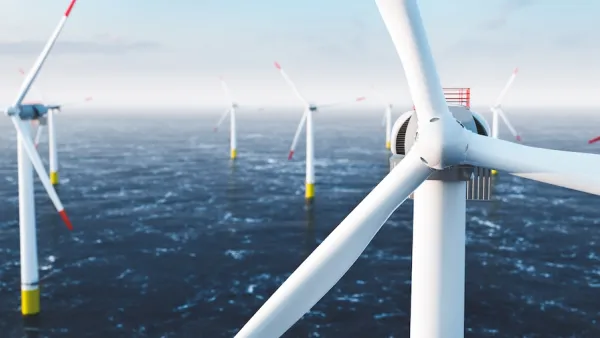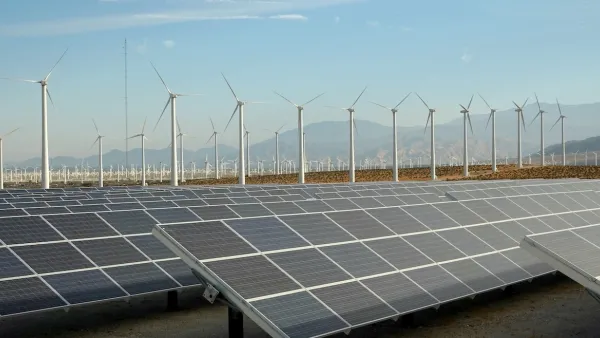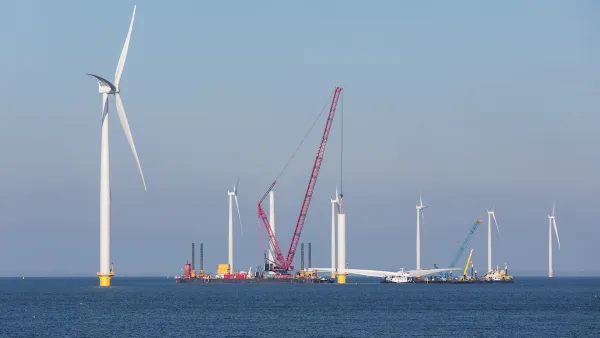The rush to secure coastal leases for wind energy production is causing some critics to call for stronger scrutiny from regulatory agencies.

The rapid growth of offshore wind projects in California is prompting concern from some residents and environmental groups leery of the potential of massive wind farms to transform the coastal environment in unpredictable ways.
As Julie Cart explains in an article for CALmatters, “The state’s blueprint envisions offshore wind farms producing 25 gigawatts of electricity by 2045, powering 25 million homes and providing about 13% of the power supply.” Last year, the federal government auctioned off 583 square miles off the Northern and Central California coast for wind leases.
“The projects will be a giant experiment: No other floating wind operations are in such deep waters.” Additionally, “Each of the wind farms off Humboldt and Morro Bay will require an extensive network of offshore and onshore development, including miles of undersea transmission lines, expanded ports, new or upgraded onshore substations and electrical distribution networks.”
Potential risks include the overindustrialization of coastal areas, the disruption of migrating sea life and birds, and excessively high maintenance costs. The California Coastal Commission, one of the agencies responsible for permitting, acknowledges the timeline is somewhat rushed, but claims that “through ‘adaptive management’ — the ability to adjust policies and requirements as conditions change — detrimental effects can be avoided or mitigated.”
FULL STORY: “A massive enterprise’: California’s offshore wind farms are on a fast track

National Parks Layoffs Will Cause Communities to Lose Billions
Thousands of essential park workers were laid off this week, just before the busy spring break season.

Retro-silient?: America’s First “Eco-burb,” The Woodlands Turns 50
A master-planned community north of Houston offers lessons on green infrastructure and resilient design, but falls short of its founder’s lofty affordability and walkability goals.

Delivering for America Plan Will Downgrade Mail Service in at Least 49.5 Percent of Zip Codes
Republican and Democrat lawmakers criticize the plan for its disproportionate negative impact on rural communities.

Test News Post 1
This is a summary

Test News Headline 46
Test for the image on the front page.

Balancing Bombs and Butterflies: How the National Guard Protects a Rare Species
The National Guard at Fort Indiantown Gap uses GIS technology and land management strategies to balance military training with conservation efforts, ensuring the survival of the rare eastern regal fritillary butterfly.
Urban Design for Planners 1: Software Tools
This six-course series explores essential urban design concepts using open source software and equips planners with the tools they need to participate fully in the urban design process.
Planning for Universal Design
Learn the tools for implementing Universal Design in planning regulations.
EMC Planning Group, Inc.
Planetizen
Planetizen
Mpact (formerly Rail~Volution)
Great Falls Development Authority, Inc.
HUDs Office of Policy Development and Research
NYU Wagner Graduate School of Public Service





























